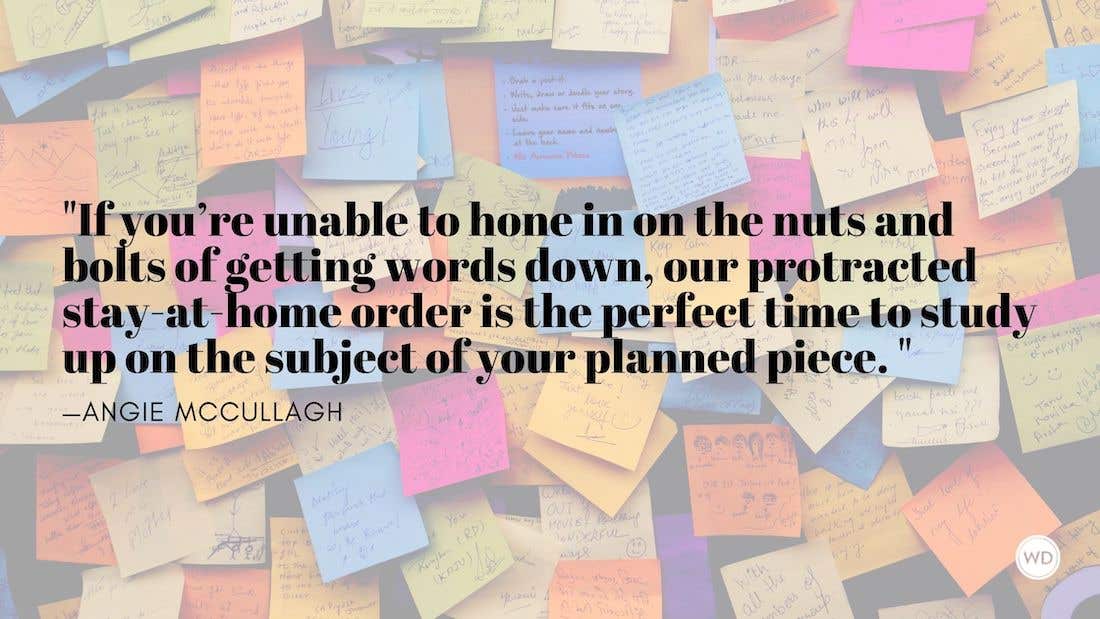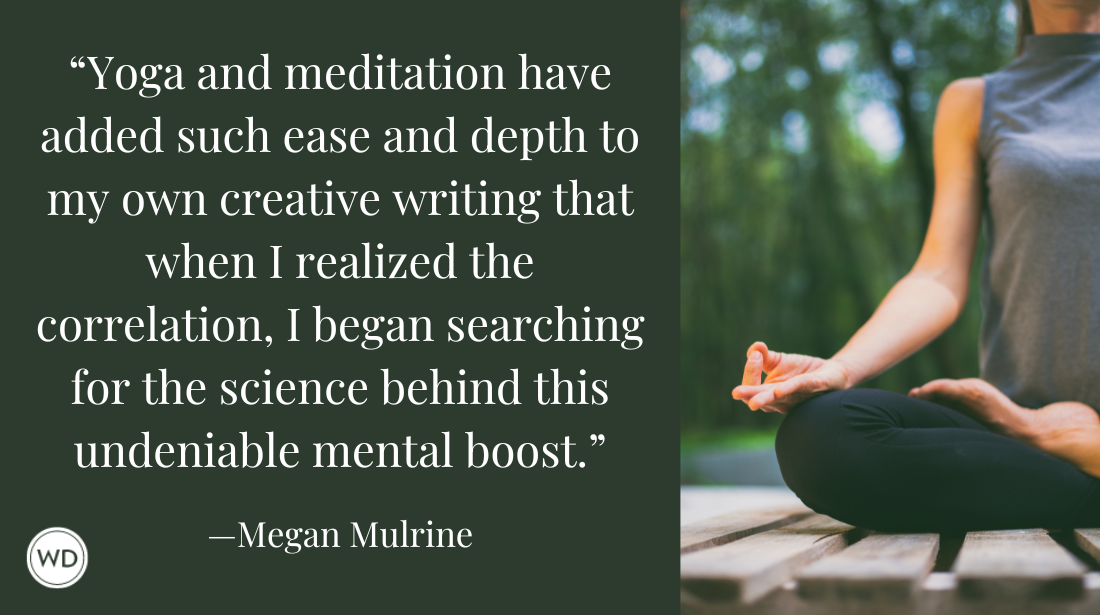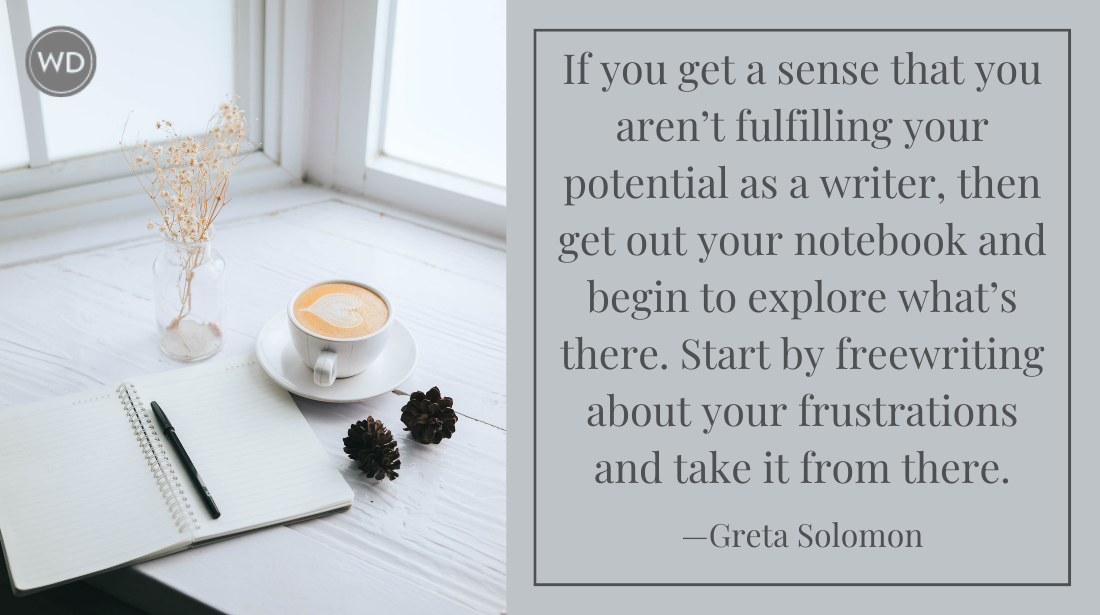Flex Your Creative Writing Muscles
A well-balanced writing diet includes a daily dose of creativity. Here are four ways to satisfy your creative urges. by Stephenie Steele and Joe Stollenwerk
EXPOSURE AND REFLECTION
Think about a moment of extreme emotion from your youth or adolescence. It could be a first kiss, or the first time you were caught doing something wrong, or a terrifying moment at summer camp—a memory searing enough to remain vivid in your mind. Then:
1. Write about the event itself. Move moment to moment through the physical and emotional particulars of what happened. Ideally, this means you’re writing about a very short period of time, anywhere from five seconds to a minute. Don’t worry about making it pretty or poetic. Just get the reader to know exactly what it felt like. (Hint: Sensory details will help.)
2. Write about who you were at the time. Step back from the episode and tell the reader about yourself at the time this was happening. Here’s where you get a chance to interrogate yourself, to explore the deeper fears and needs that will allow you (and, with hope, your reader) to understand why this event has imprinted itself in your memory.
3. Now it’s time to integrate the emotions and inner workings of you as a character with the action of the event. A good short story—or even a scene—requires this weaving of passion and perspective. Remember, the key resides in offering the reader everything you know: both what’s happening at the white-hot moment in question and why it matters in the broader history of your character.
—Steve Almond
LIFE IN REVERSE
Reverse something in nature, something in the order of things. Make a central change by putting wild tigers into the laps of small women.
If this prompt strikes you as too broad, ask a friend or family member to write down an element of nature—waterfalls, cyclones, antelope, beetles, dirt. Then, change something about this element. Make it a change that matters. Draw it. Make sure it’s drawable, that you’ve picked a change that is tangible enough to capture with a visual image.
And then write a couple pages from the point of view of someone who is affected by this change. It doesn’t matter who; just jump into a few voices and see who grabs you.
—Aimee Bender
PUSHING BOUNDARIES
Many fiction writers, especially beginning ones, can be broken into two categories: those who are writing thinly veiled autobiography, and those who are avoiding it (which, usually, includes people who are interested in genres like fantasy or horror). It’s often useful for both types of writers to move outside of their comfort zones, so here are two exercises designed to help you do just that.
1. Start with an incident that happened in real life. Write it in first person, in the form of a kind of summary, in one sentence. For example: “My dad and I were driving to Mammoth Cave, in Kentucky, for a little father-and-son bonding time.” Or, “My girlfriend and I were talking about breaking up.” Just think of something personal that’s been on your mind.
2. The next sentence should be a lie, and probably kind of a big one. “My father was a former movie star, and though he hadn’t been in a film in more than a decade, he still worried about being ‘recognized’ by the public.” Or, “I’d actually been dead for the last few years, but I hadn’t told my girlfriend about it because I didn’t want to scare her.” You get the picture. Have some fun with your lie—you can even make it fantastical—but make sure it’s got enough weight that you can make it convincing. By the end, the world of the story should be almost entirely fictional, but with just enough patina of reality from that first sentence that you can make use of it.
—Dan Chaon
SOAP OPERA GRANDEUR
Watch a five-minute segment of a soap opera. Then, rewrite the scene so it feels like serious literary fiction—which is to say, avoid cliché; avoid the expected. If there is a person in the story, or in the situation, who seems like he is set up to be a victim, then make it difficult for that person to be perceived as victimized. Likewise, if there is a heroine in the scene, make it difficult for your readers to believe so simply in her heroism. The purpose of this exercise is not to debunk, but to complicate.
—Brock Clarke
Excerpted from the Creativity & Expression Writers Online Workshop.
WD Online Course:
Learn techniques to add depth, texture and emotion to your writing:
Creativity & Expression








